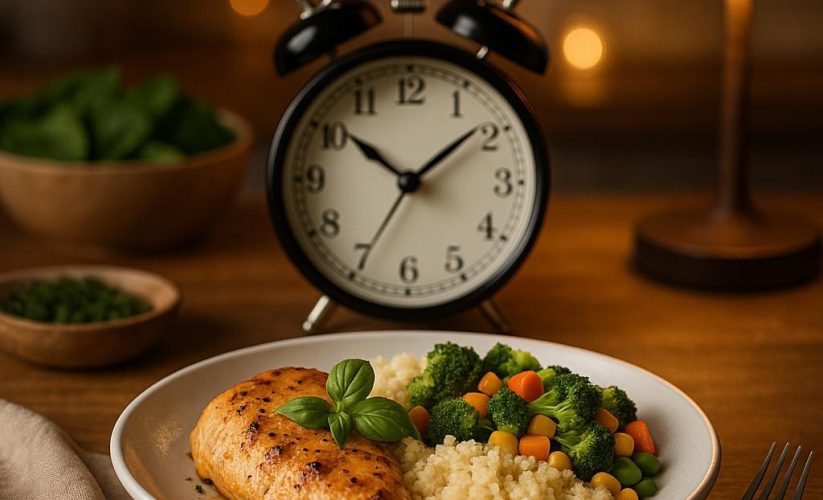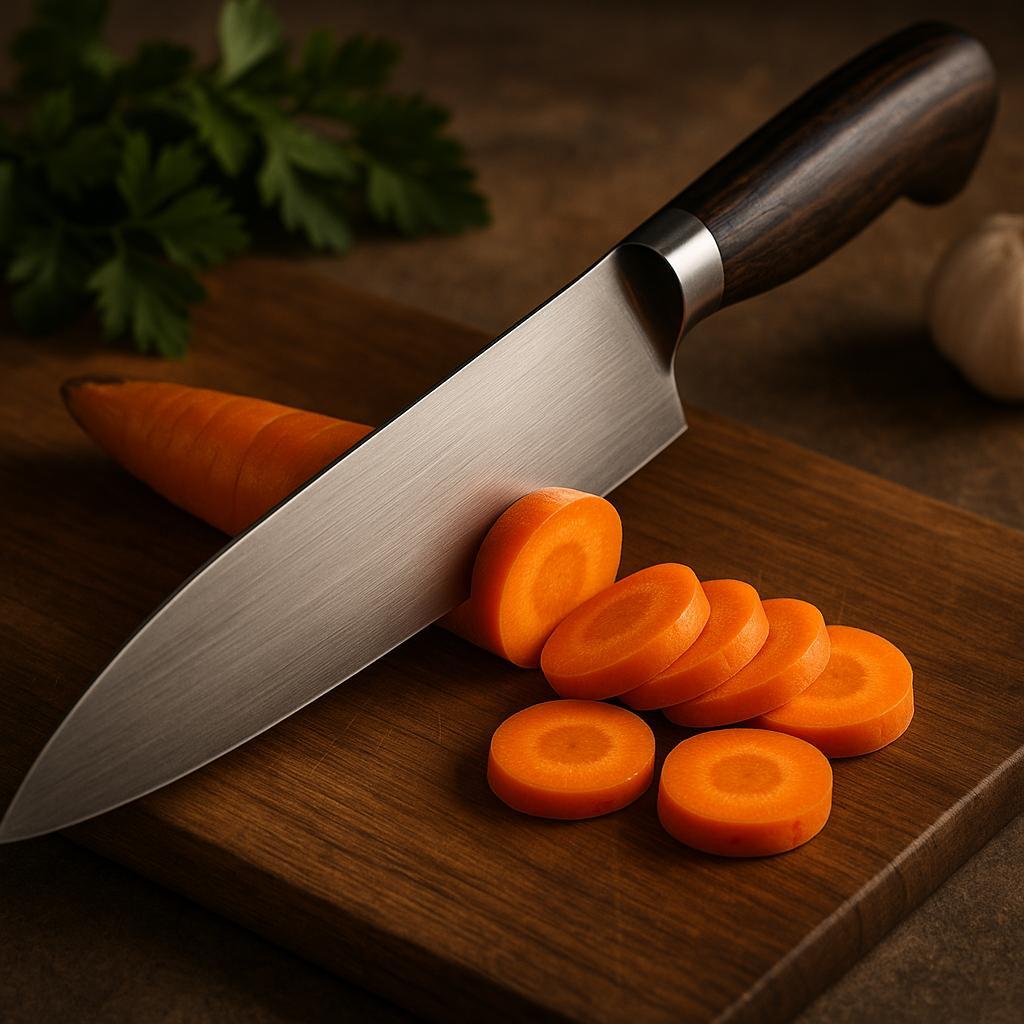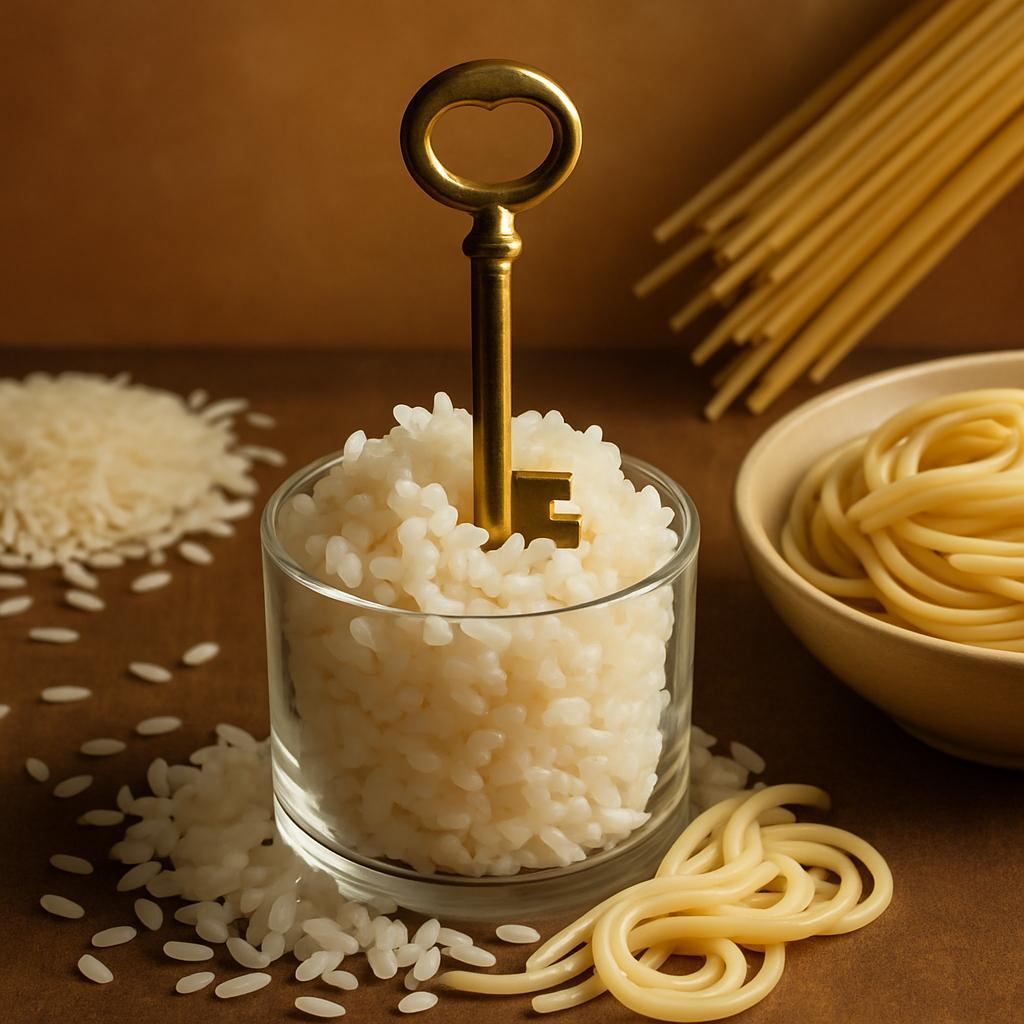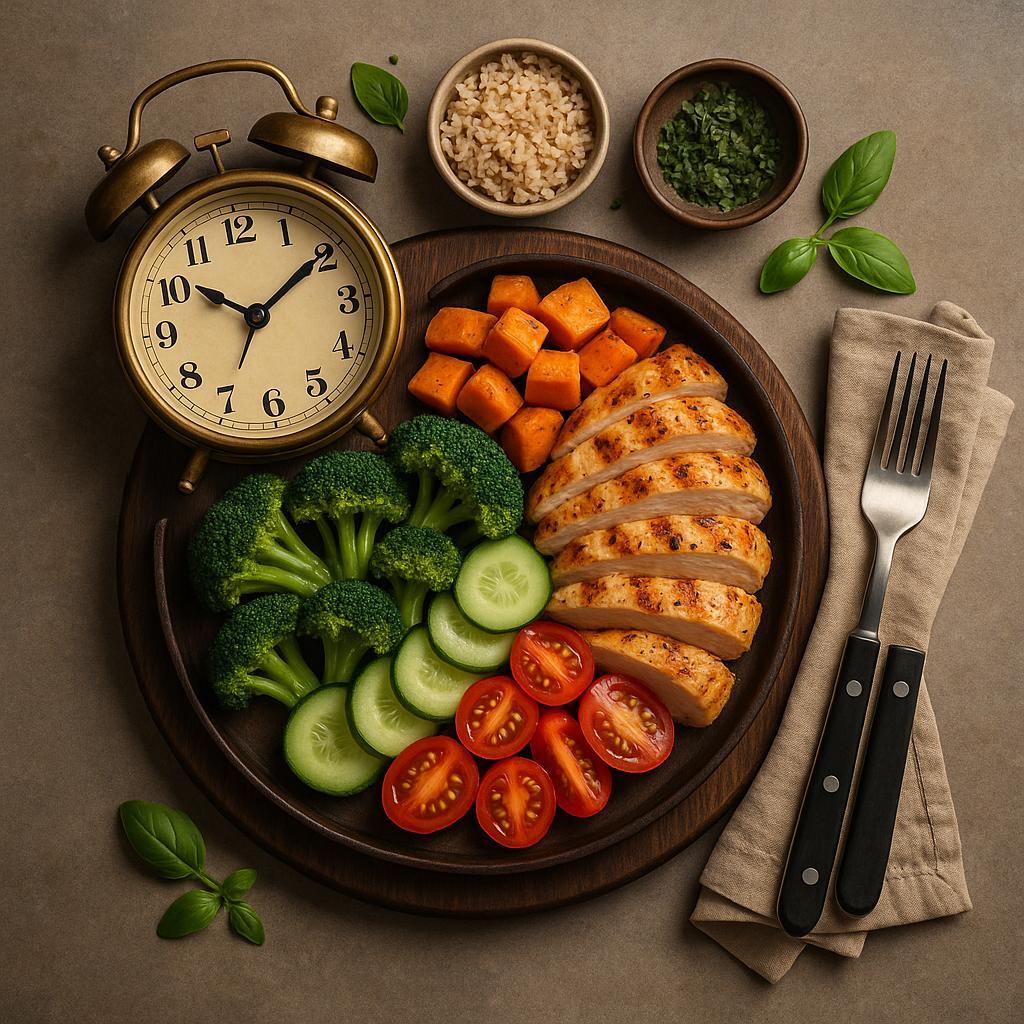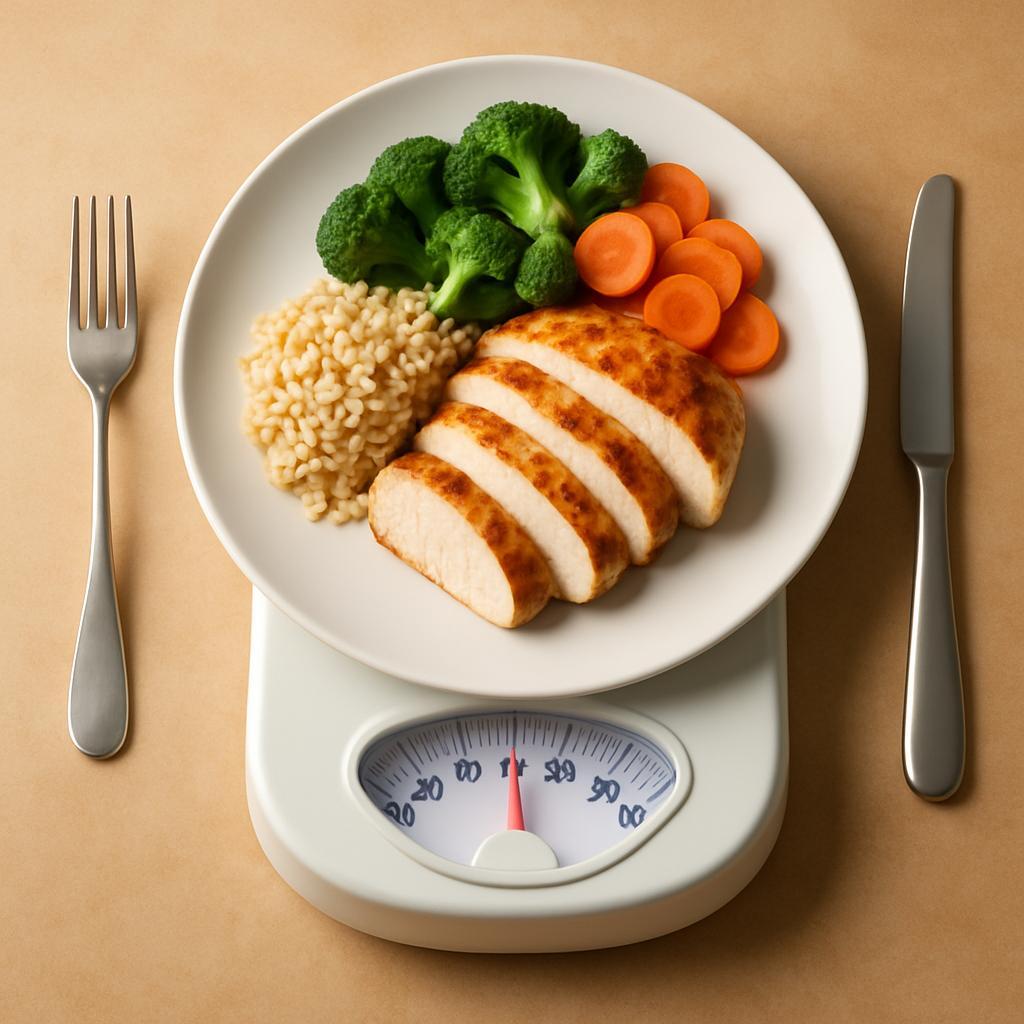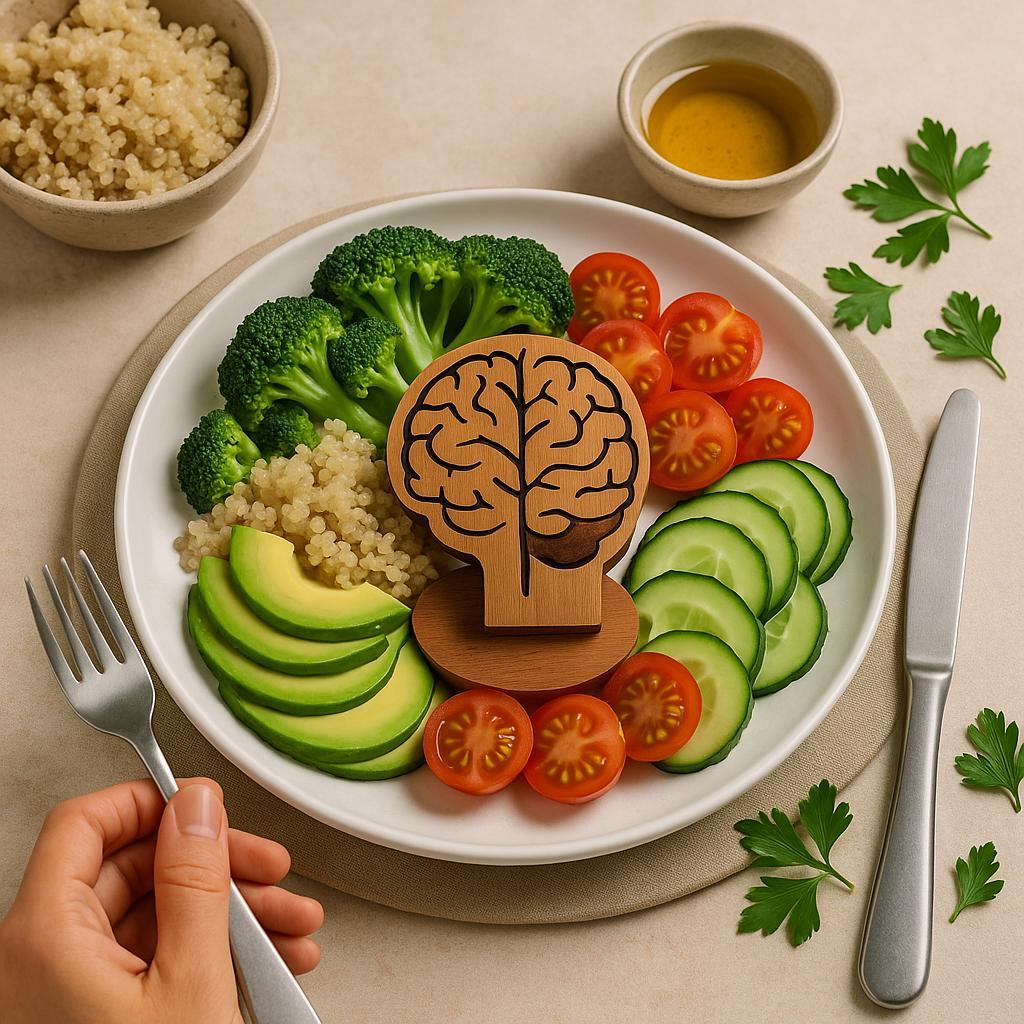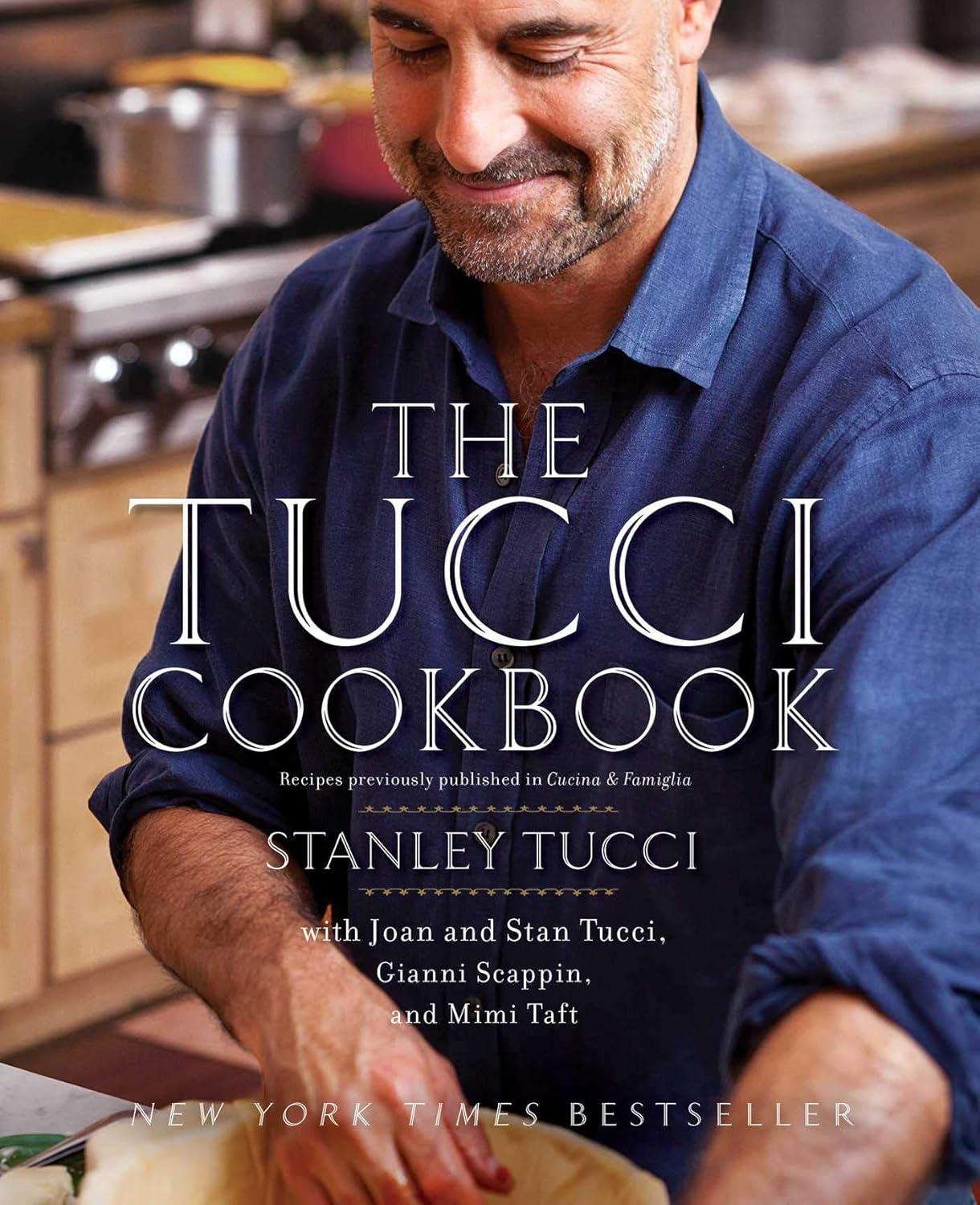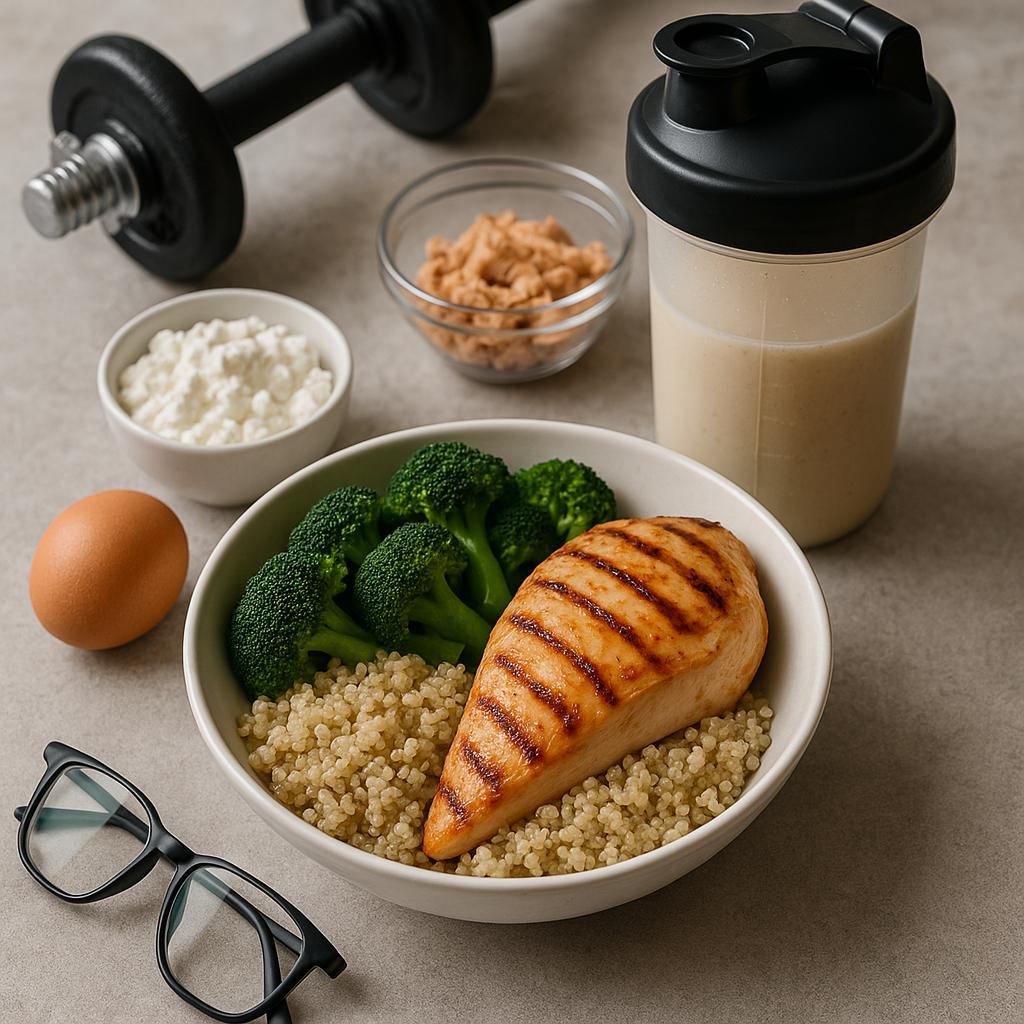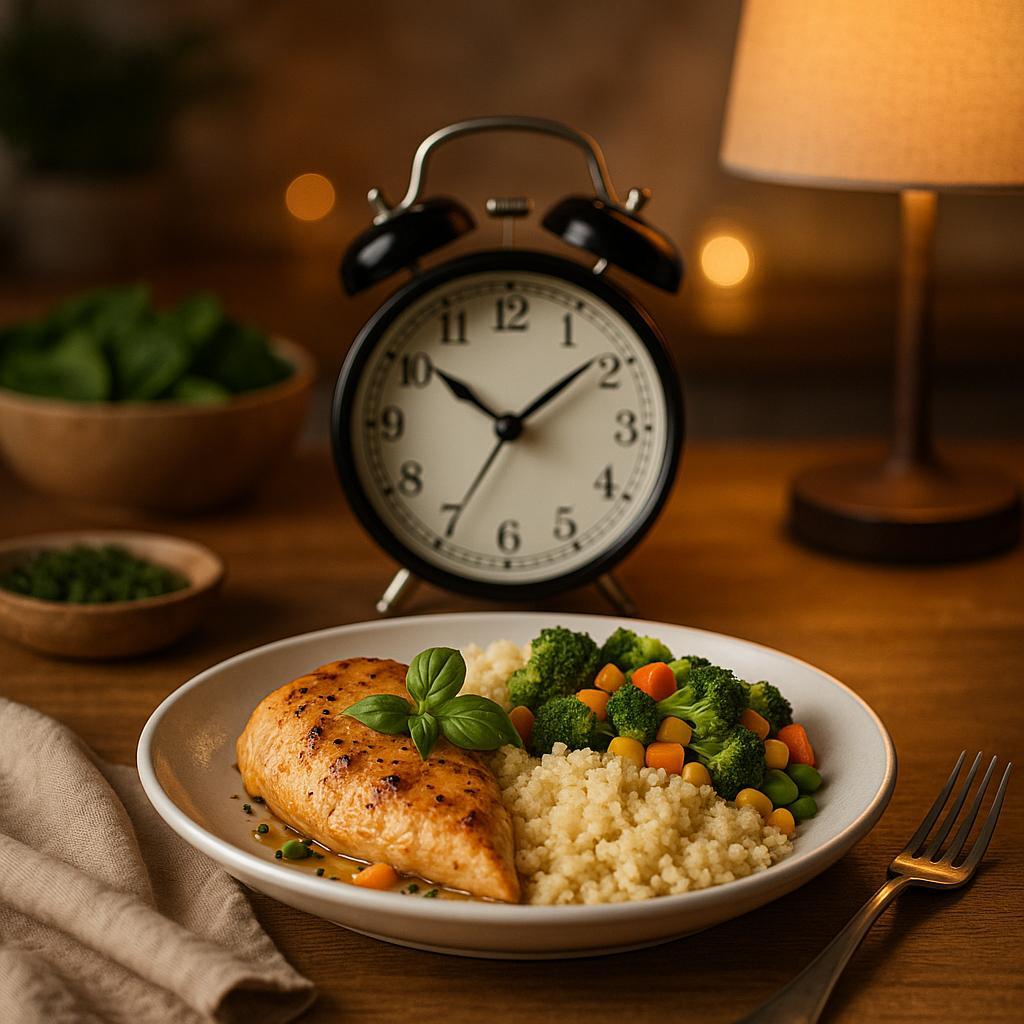Effortless Plant-Based Week: Your Beginner Blueprint
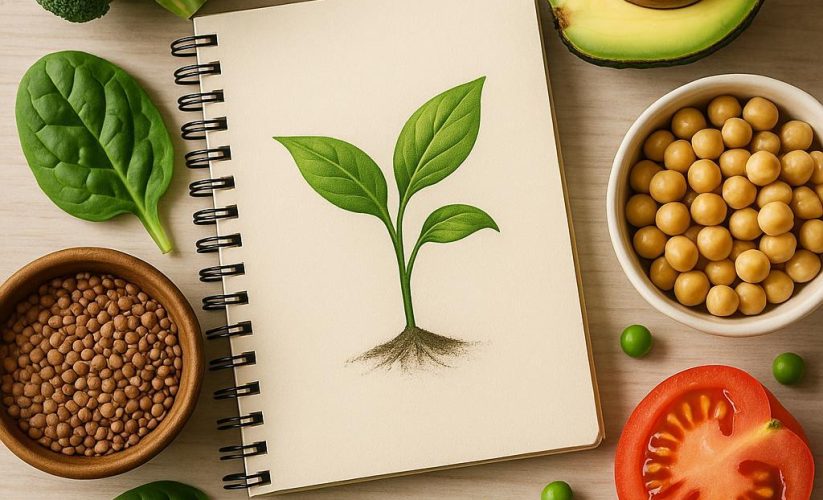
Seven days, zero overwhelm. Imagine plant-based eating that runs on autopilot-meals you can mix, match, and finish fast, even on your busiest nights. This beginner blueprint trims the noise and builds a workable rhythm: a few reliable staples, repeatable templates, and small prep steps that ease decision fatigue. The result is practical, affordable, and flexible enough to fit real schedules and real appetites. If you’re plant-curious or just need a reset, consider this your on-ramp to a week that feels effortless while staying genuinely nourishing. Ready to set your rhythm? Let’s begin.
Table of Contents
- Build a plant powered pantry in one trip
- Prep once enjoy effortless meals all week
- Flavor foundations that make vegetables craveable
- Stay full and energized with simple protein rich choices
- Q&A
- The Conclusion
Build a plant powered pantry in one trip
Make one decisive lap through the store and grab versatile anchors that turn into breakfast, lunch, and dinner without fuss. Prioritize grains (2 lb brown rice, 1 lb quinoa, a big tub of rolled oats), legumes (6 cans or 2 lb dry: chickpeas, black beans, lentils), and flavor builders (extra-virgin olive oil, tahini, low-sodium tamari/soy sauce, apple cider vinegar, canned diced tomatoes x4, coconut milk x2). Add nuts and seeds (peanut butter, walnuts, chia), a tight spice core (cumin, smoked paprika, garlic and onion powder, chili or curry, cinnamon), and long-lasting produce (garlic, yellow onions, carrots, cabbage, sweet potatoes, lemons). Round it out with a couple of freezer staples (edamame, peas, mixed veg) and a shelf-stable plant milk. Choose store brands, aim for “no added sugar” on nut butters and milks, and scan beans/tomatoes for lower sodium-these swaps stretch budget and flavor.
Deploy your haul with a simple formula: Grain + Legume + Veg + Sauce. Batch-cook 4 cups rice and 2 cups lentils on day one; you now have 10-12 cups of ready bases. Spin out meals in minutes: chickpeas + tomatoes + coconut milk + curry = silky stew over quinoa; black beans + frozen corn/peas + smoked paprika + tamari = taco bowls; red lentils simmered with tomatoes, cumin, and onion powder = spoonable sloppy joes; edamame + cabbage ribbons + soy-tahini-lemon = crunchy stir-fry on rice; oats + chia + peanut butter + cinnamon = grab-and-go jars. Decant dry goods into jars, label with purchase dates, and practice FIFO so nothing lingers. Roast a tray of sweet potatoes and carrots while grains cook, whisk one master sauce (tahini, tamari, lemon, water) for the week, and keep lemon wedges and chopped onions at eye level; these small habits turn a single cart into seven days of plant-forward meals without repeat fatigue.
Prep once enjoy effortless meals all week
Set a timer for 90 minutes and build a week’s worth of mix-and-match building blocks for two. Preheat the oven to 425°F (220°C). Start grains: 1.5 cups brown rice and 1 cup quinoa (about 12 cups cooked total); simmer 1.25-1.5 cups green or brown lentils in salted water with a bay leaf. Press two blocks extra‑firm tofu, cube, and toss with 3 tbsp tamari, 1 tbsp maple, 1 tsp smoked paprika, 1 tsp garlic powder; bake 25-30 minutes until bronzed. Load two sheet pans with 2 sweet potatoes (cubed), 1 head broccoli (florets), 2 bell peppers (strips), 8 oz mushrooms (halved), and 1 red onion (wedges); season with 2 tbsp olive oil or a tahini‑water slurry, plus 1 tsp each cumin and paprika; roast 20-25 minutes, rotating once. Blend two sauces-lemon-tahini (1/2 cup tahini, 1 lemon, 1 garlic clove, 1 tsp cumin, water, salt) and a cooling cilantro-lime yogurt (1 cup unsweetened plant yogurt, 1/2 bunch cilantro, 1 lime, pinch salt). Quick‑pickle a red onion (1/2 cup hot water + 1/2 cup vinegar + 1 tsp sugar + 1 tsp salt), rinse and spin 5 packed cups greens, and portion 5 overnight oat jars (1/2 cup oats + 1 tbsp chia + 3/4 cup plant milk; add fruit later). Optional boosters: drain 2 cans chickpeas (save aquafaba for baking), toast 1/2 cup pumpkin seeds, and box up snack veggies with 1 cup hummus. Cool everything, then pack in shallow containers and label by item and date.
Storage map: Refrigerate grains/roasted veg/sauces 4-5 days; tofu and lentils 3-4 days; freeze half the grains and lentils on day 1 to keep flavors fresh (thaw overnight). Keep sauces in squeeze bottles for fast drizzling; line greens with a paper towel to stay crisp. Assembly formulas that take 5-10 minutes: Bowl = 1 cup grain + 3/4 cup lentils or chickpeas + 1 cup roasted veg + tofu + handful of greens + sauce + crunch (pumpkin seeds); reheat base 90 seconds in the microwave or 4 minutes in a skillet, then finish with pickled onions. Wrap/tacos = warm tortilla + hummus + roasted veg + greens + cilantro‑lime yogurt; add hot sauce. Skillet “curry” = 2 tsp curry paste + 1/2 can coconut milk + 1.5 cups roasted veg + 1 cup lentils; simmer 6 minutes and spoon over rice. Speedy soup = blend 2 cups broth with a few roasted peppers/onions, add 1 cup lentils and a handful of greens; heat 5 minutes. Pasta night = toss hot pasta with roasted mushrooms/peppers, lemon‑tahini, and a splash of pasta water. Breakfast stays on autopilot with your oat jars (try apple‑cinnamon, blueberry‑lemon, or PB‑banana), while snack boxes cover the midday dip. The result: zero decision fatigue, fresh textures all week, and dinners that plate up faster than delivery.
Flavor foundations that make vegetables craveable
Make plants irresistible by pulling the five levers of flavor with intention: salt (aim ~3/4 tsp kosher salt per pound of veg, plus a pinch at the end), acid (1-2 tsp lemon, lime, or vinegar per cup cooked veg to wake everything up), fat (1 tbsp neutral or olive oil per pound for roasts; finish with 1 tsp bold oil-sesame, walnut, chili-per serving), heat (425°F/220°C roasting or a ripping-hot pan for quick browning), and umami (1 tsp soy/tamari, white miso, gochujang, or nutritional yeast per cup to deepen savoriness). Layer in aromatics (garlic, scallion, ginger, citrus zest) and texture (toasted nuts, seeds, pangrattato) so each bite lands. Tactics that pay off fast: toss veg with salt first to draw moisture, then oil; bloom spices in a teaspoon of oil 30-60 seconds before adding veg; deglaze browned bits with a splash of vinegar or citrus; brush on a sticky glaze (miso-maple, harissa-orange, balsamic-garlic) in the last 3-5 minutes of roasting; finish hot veg with cold elements (herb yogurt, tahini-lemon, salsa verde) for contrast.
Use simple, repeatable templates that fit a weeknight rhythm. Broccoli or broccolini: char in a dry pan, then toss with lemon-tahini, chili flakes, and toasted sesame. Carrots: roast with cumin and smoked paprika; glaze with orange zest and a stripe of harissa; finish with pistachios. Mushrooms: high-heat sear, then 1 tsp soy + 1 tsp vegan butter + thyme; drizzle with sherry vinegar. Cauliflower: shawarma spices, sheet-pan roast, then tahini-garlic and pickled onions. Zucchini: blister, add mint, dill, and a squeeze of lime; top with dukkah. Cabbage wedges: roast until caramelized, brush with miso-maple, and shower with scallions. Beets: warm with walnut oil, orange, and a crack of pepper. Keep a “flavor tray” ready-toasted nuts/seeds, chili crisp, lemon wedges, microplane for zest, and a jar of quick pickles (equal parts vinegar and water + salt + a pinch of sugar) to drop brightness on rich dishes-so any vegetable can go from fine to craveable in 10 minutes.
Stay full and energized with simple protein rich choices
Build every meal around a simple, sturdy protein anchor and you’ll coast through the day without energy dips. Reach for tofu (pan-crisp 8 minutes; 1/2 block ≈ 20-24 g), tempeh (steam 5 minutes, sear; 1/2 block ≈ 17-20 g), lentils (canned or pre-cooked; 1 cup ≈ 18 g), chickpeas (1 cup ≈ 14 g), edamame (1 cup ≈ 17 g), seitan if gluten is okay (3 oz ≈ 21 g), soy yogurt (3/4 cup ≈ 9 g), and sprinkle boosters like hemp seeds (3 Tbsp ≈ 10 g) or pumpkin seeds (1/4 cup ≈ 8 g). Keep flavor shortcuts on standby-tamari + maple + garlic, smoked paprika, curry paste, or salsa verde-so the same protein never tastes the same twice. For lasting fullness, pair protein with fiber and fats: pile onto quinoa, brown rice, or sweet potato, add a swipe of tahini or a few slices of avocado, and you’ve hit the sweet spot of satiety and steady energy. Aim for 20-30 g protein at meals and 10-15 g at snacks; you’ll feel the difference by mid-afternoon.
Use this plug-and-play template to keep it effortless: Breakfast-soy yogurt parfait with berries, granola, and hemp seeds (≈ 20 g). Lunch-warm lentil + quinoa bowl with arugula, olives, cucumbers, and lemon-tahini (≈ 25-30 g). Snack-salted edamame with a citrus fruit (≈ 15-17 g). Dinner-crispy tofu stir-fry with a frozen veggie mix, brown rice, and peanut-lime sauce (≈ 30 g). Evening-hot cocoa made with soy milk or a small chia pudding (≈ 7-10 g). Batch once, breeze all week: cook a pot of lentils, bake or air-fry two blocks of tofu, and whisk three quick sauces-tahini-lemon, chili-garlic, and miso-ginger. Store in clear containers so assembly takes five minutes, not fifty, and rotate seasonings to keep your taste buds-and energy-on a high note.
Q&A
What should I buy in one trip to cover a full plant-based week without waste?
Choose versatile staples that mix and match. Aim for two grains (oats; brown rice or quinoa), three proteins (extra-firm tofu or tempeh; canned chickpeas; dry or canned lentils), sturdy veg that last (sweet potatoes, carrots, broccoli, bell peppers, onions), one leafy green (spinach or kale), two fruits for snacks, and two flavor anchors (tahini and salsa; or pesto and soy sauce). Add fats (olive oil, peanut butter), a spice trio (garlic powder, smoked paprika, cumin), and a fermented punch (miso or sauerkraut). Buy modest quantities: about 4-6 cups cooked grains total, 4-6 protein blocks/cans, and 8-10 cups mixed veg. Store herbs in a jar of water, greens with a paper towel, and pre-cut hard veg in airtight containers.
How do I build balanced plates without tracking calories or macros?
Use the palm-and-plate rule. Fill half your plate with vegetables or fruit, one quarter with a protein source, and one quarter with a grain or starchy veg. Add a thumb-size portion of healthy fat and a flavor accent (acid, herbs, spice). Hand cues help: protein about a palm, grains a cupped hand, fats a thumb, leafy greens two hands. Aim for the “rule of three” colors on every plate to cover fiber, micronutrients, and satiety.
Can you give me a 30-minute Sunday prep that sets up five weeknight dinners?
Yes-run it like a circuit. Minute 0: start rice or quinoa. Minute 2: drain and press tofu, then cube. Minute 5: toss chopped carrots, broccoli, and peppers with oil and spices; roast at high heat. Minute 8: simmer lentils with garlic and cumin. Minute 10: shake up a quick sauce (tahini, lemon, soy, maple, water). Minute 15: pan-sear tofu until crisp. Minute 22: cool and box everything in modular containers. You now have building blocks for bowls, tacos, and stir-fries; assemble nightly with fresh greens or a sliced avocado for variety.
Where will my protein come from, realistically, at each meal?
Build it into the base, not just the garnish. A typical serving gives you: firm tofu or tempeh (~20 g per 3-4 oz), cooked lentils (~18 g per cup), chickpeas (~14 g per cup), edamame (~17 g per cup), seitan (~20-25 g per 3 oz), and quinoa (~8 g per cup cooked). Combine two sources to land near 20-30 g per meal, for example lentil-tahini salad, tofu-quinoa bowl, or chickpea pasta with a walnut-crumb topper. Sprinkle hemp seeds or roasted peanuts to nudge totals up by 5-10 g.
I miss the savory punch of meat and cheese-what quick swaps actually satisfy?
Layer umami and texture. For “meaty,” marinate tofu or mushrooms in soy, balsamic, and smoked paprika; pan-sear until browned. Add chopped olives or sun-dried tomatoes for depth. For “cheesy,” whisk a 2-minute sauce: tahini or cashews, lemon, garlic, and nutritional yeast. Finish dishes with miso, roasted seaweed flakes, or a drizzle of chili crisp to mimic that rich, salty hit. If you prefer store-bought, keep smoked tofu, plant-based sausage, or a good melty vegan cheese for occasional cravings.
How do I pack plant-based lunches that stay crisp instead of soggy?
Separate wet from dry until mealtime. Layer jars with dressing at the bottom, then hearty items (beans, grains), then crunchy veg, and greens on top. Pack crispy elements-seeds, roasted chickpeas, tortilla strips-in a side container and add at the last minute. Choose sturdy greens like kale or cabbage for pre-dressed salads, and cool cooked components fully before sealing to prevent condensation. Reheat sauces, not salads; keep one grab-and-go dip (hummus) to refresh leftovers fast.
The Conclusion
You now have a clear, workable way to put plants on your plate without fuss: a short weekly plan, a few smart staples, mix-and-match meal templates, and one batch-cook that carries you through. The takeaway is simple-flavor and balance come from small moves: pair plants with protein, add color and crunch, and let quick sauces do the heavy lifting. Treat this as a guide, not a rulebook; swap freely and keep what you enjoy. If you’re ready to start, pick one evening to cook a grain, a bean, and a sauce, then build the next three meals from them. May this first week feel easy enough to repeat.


